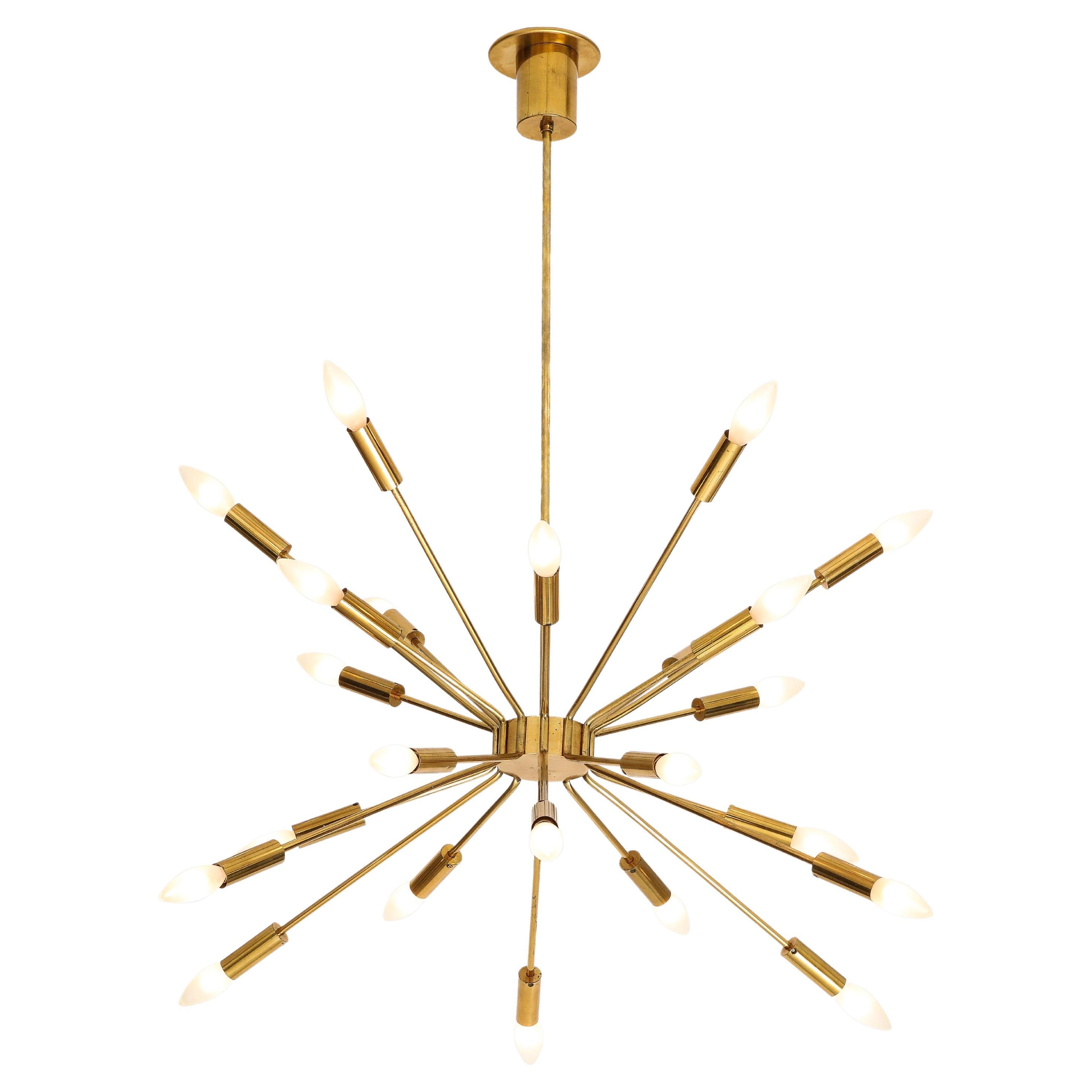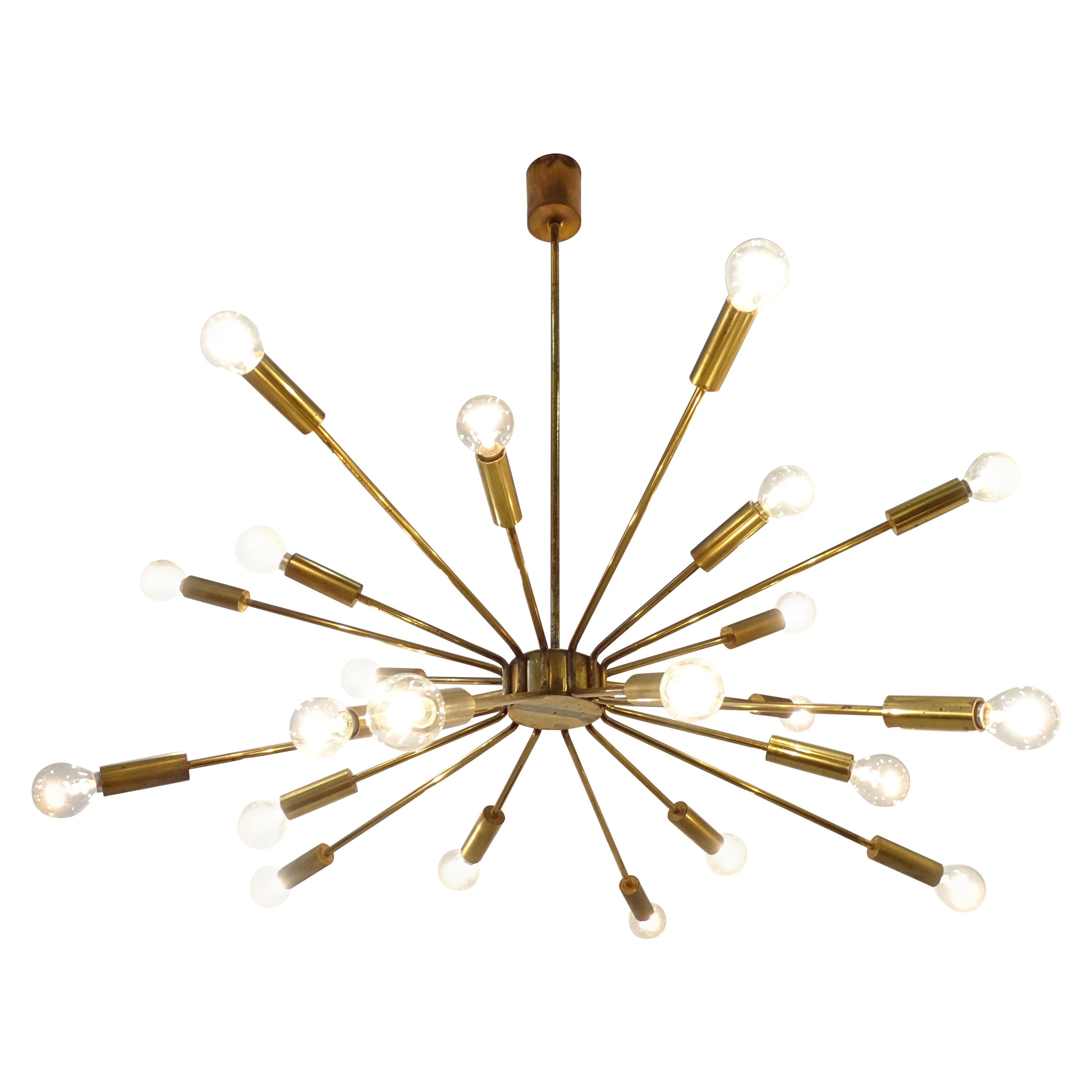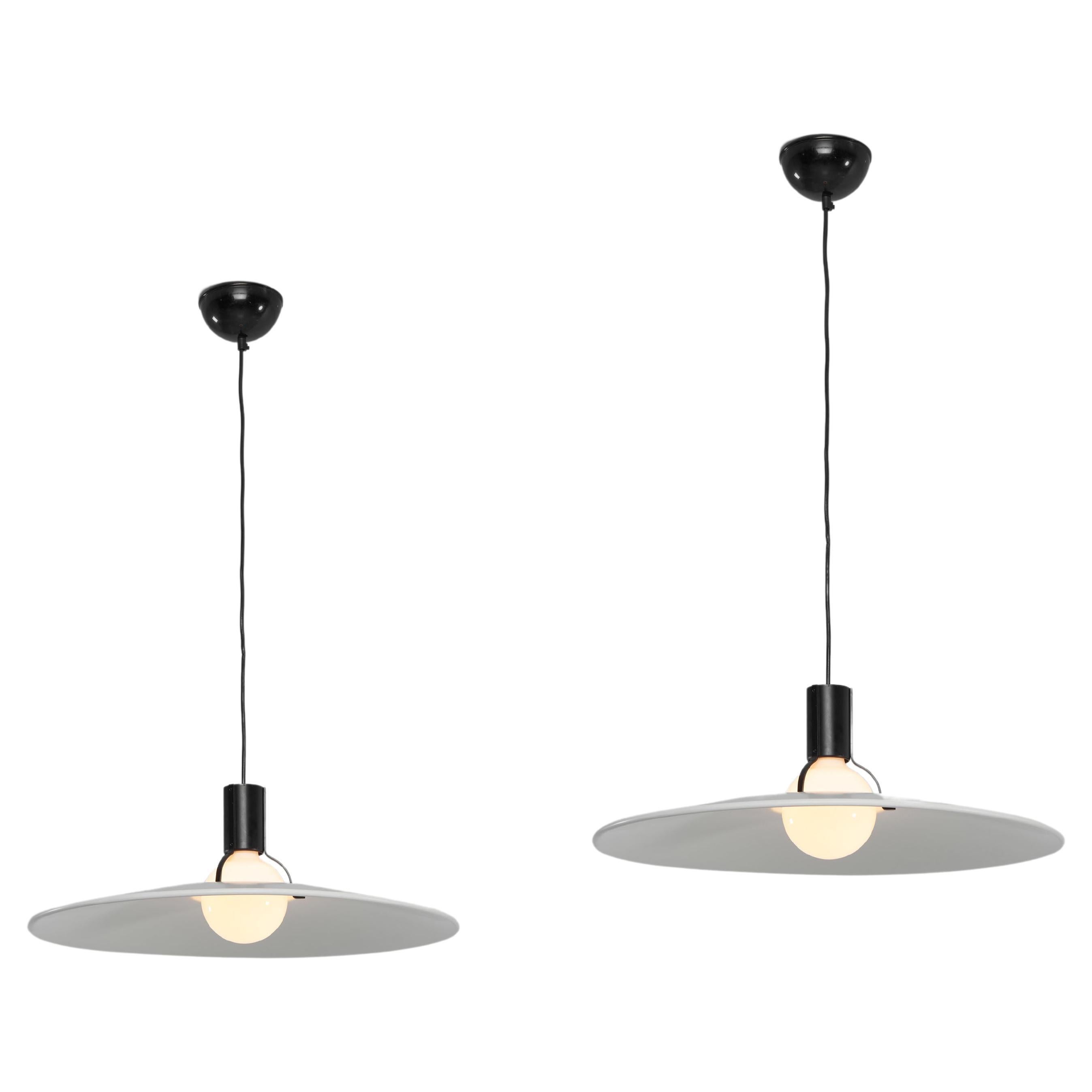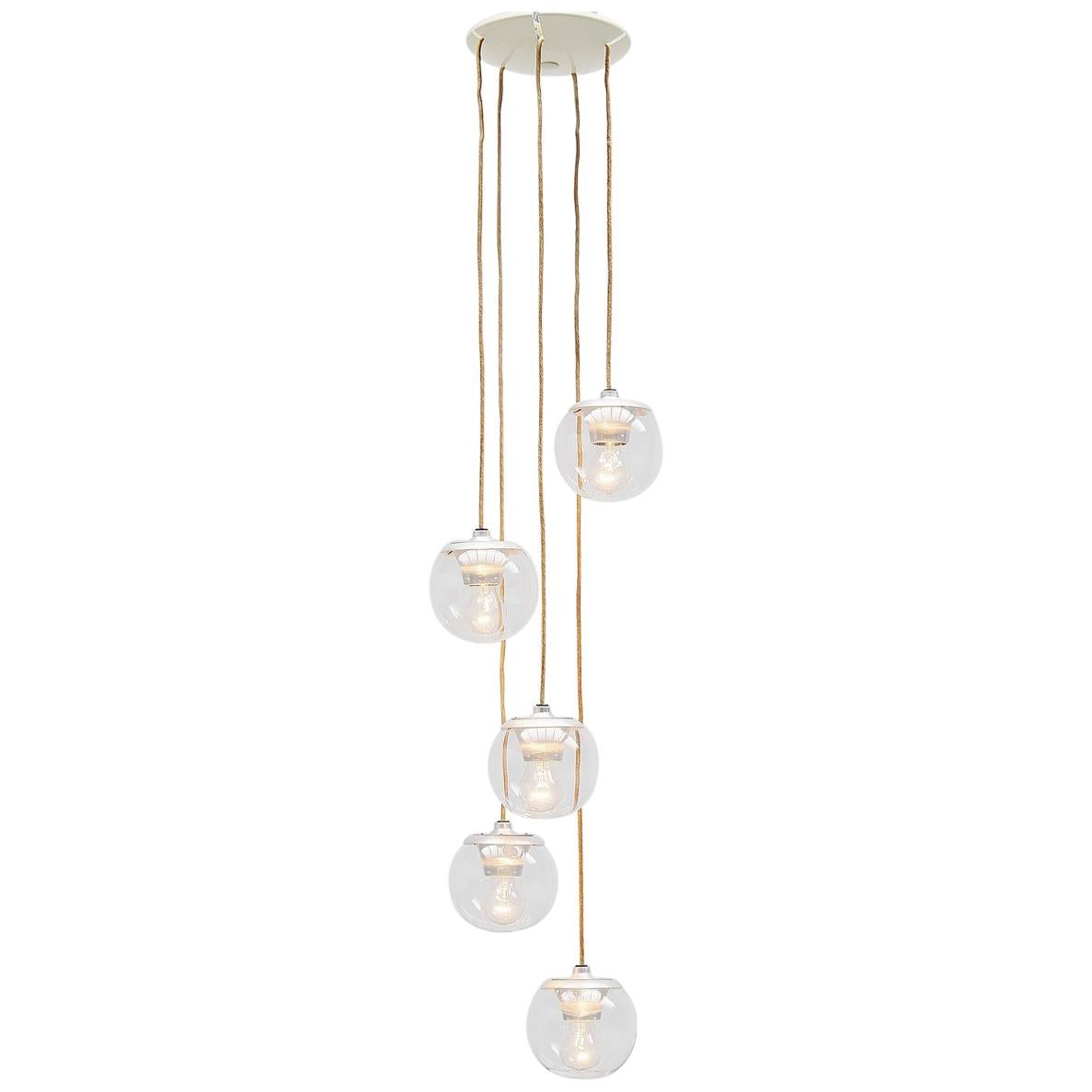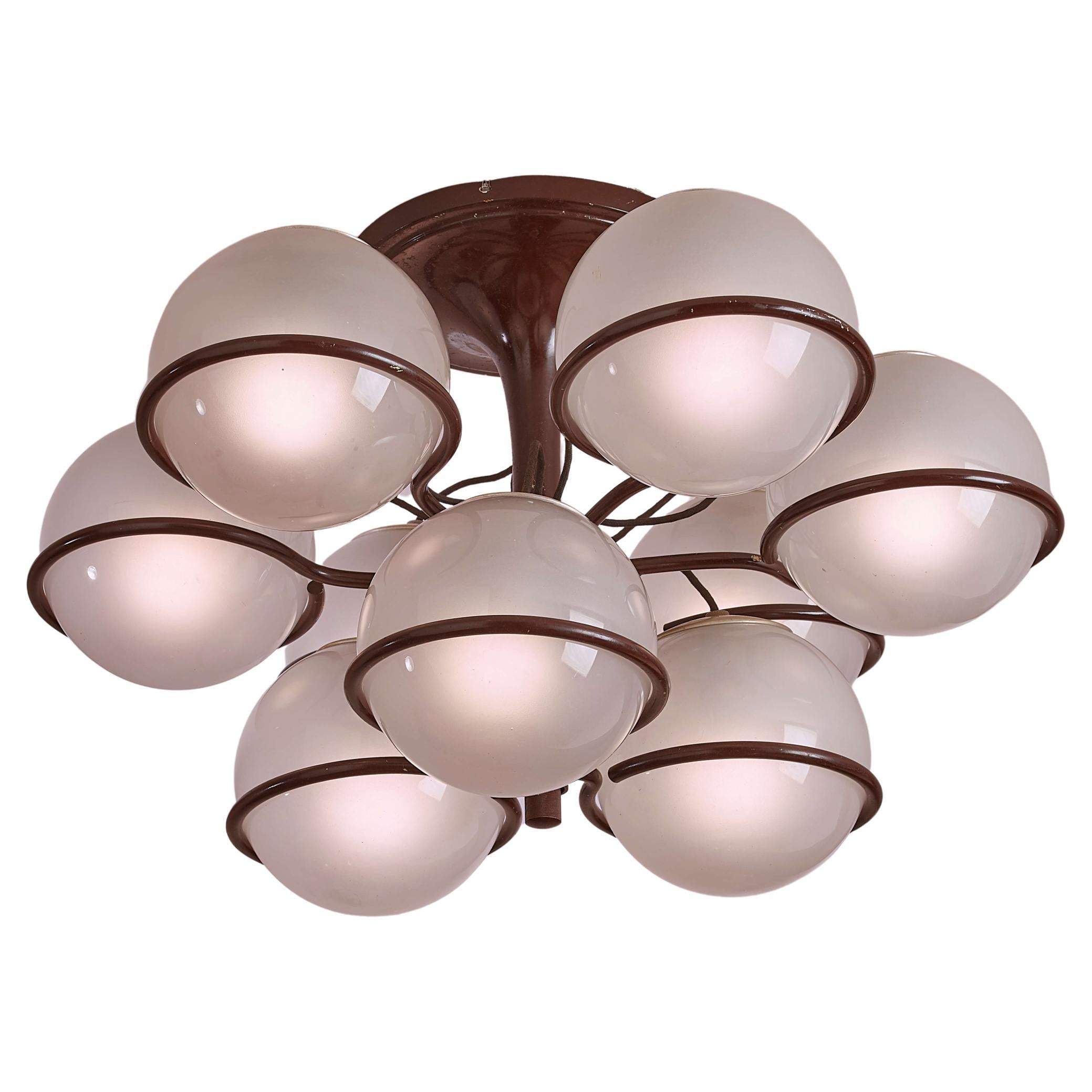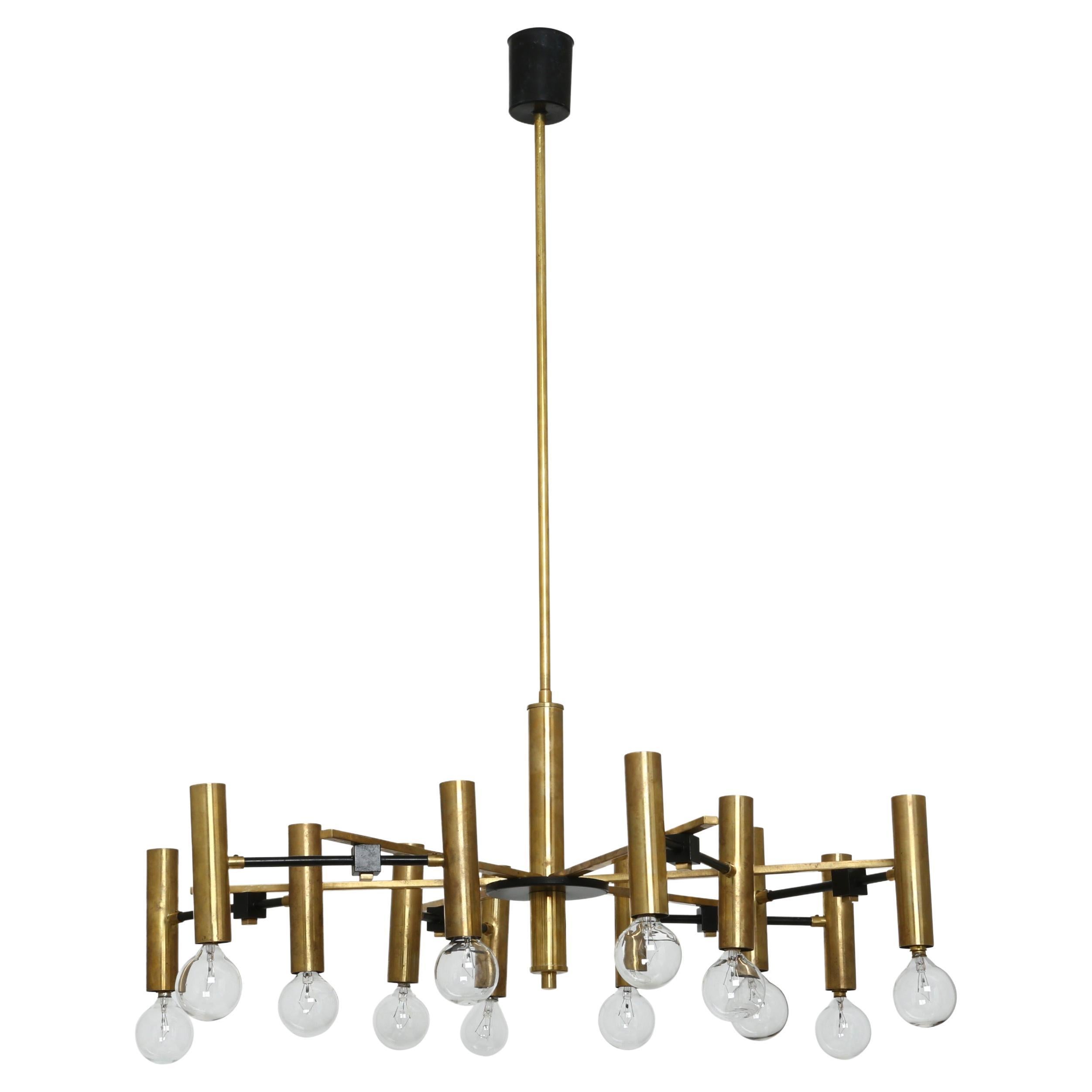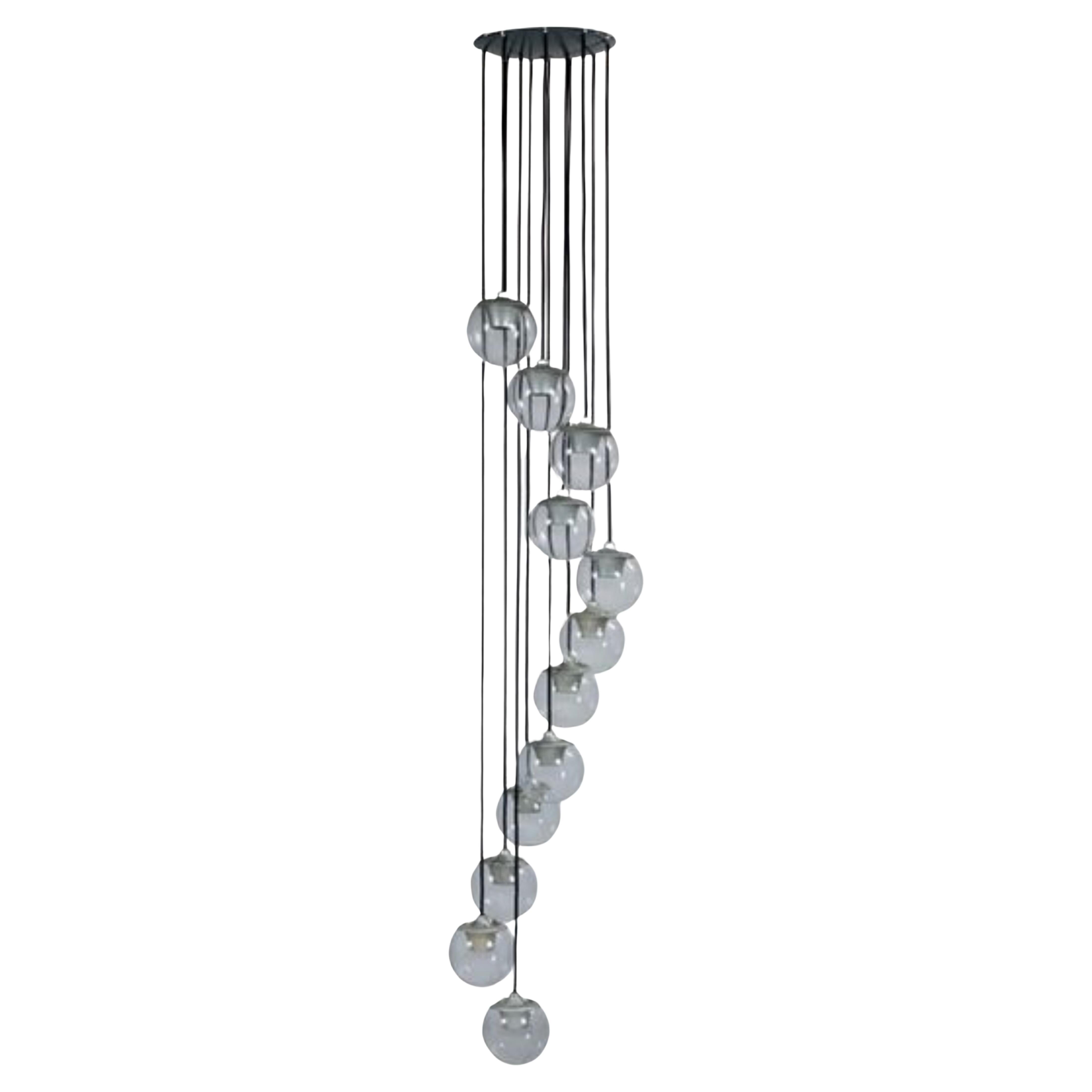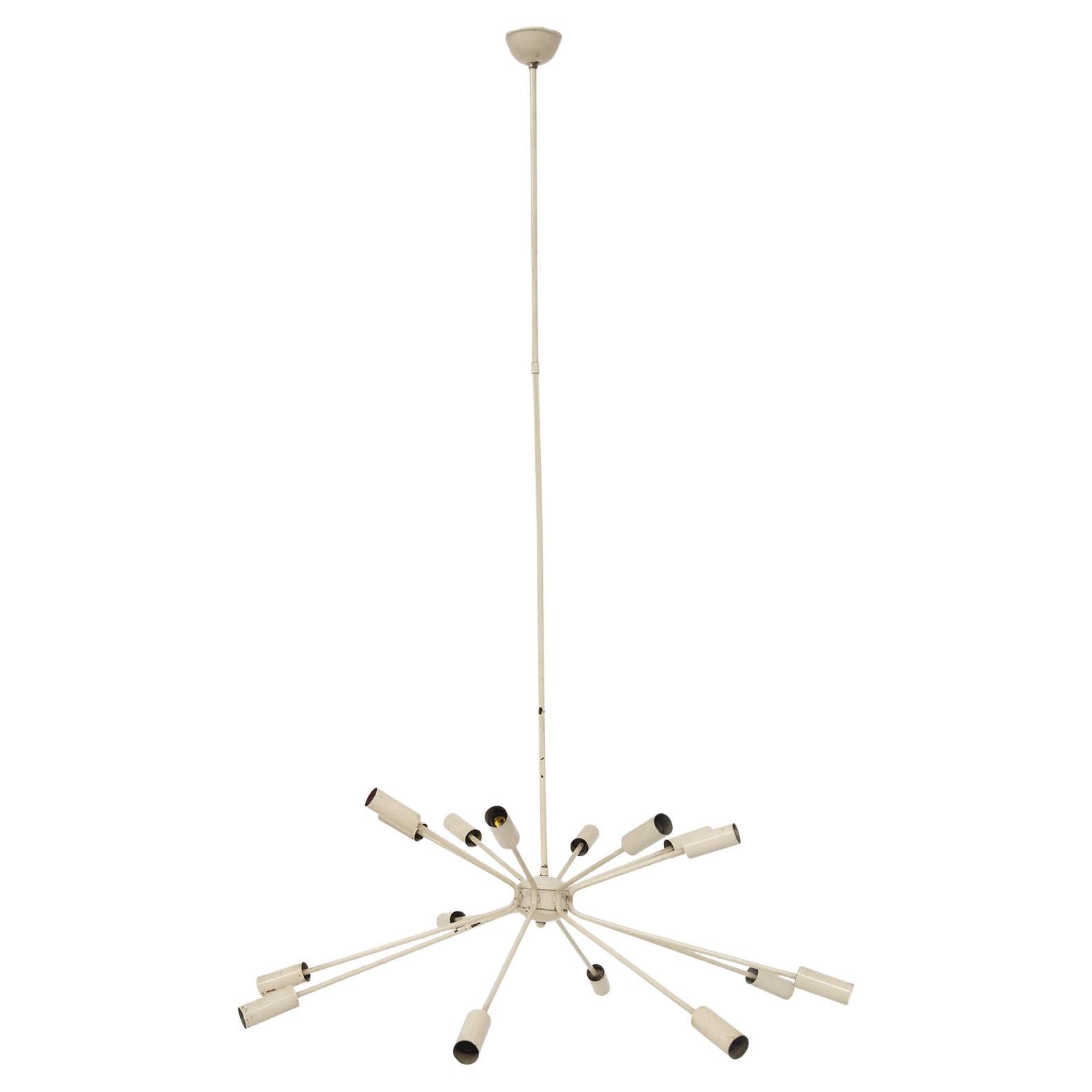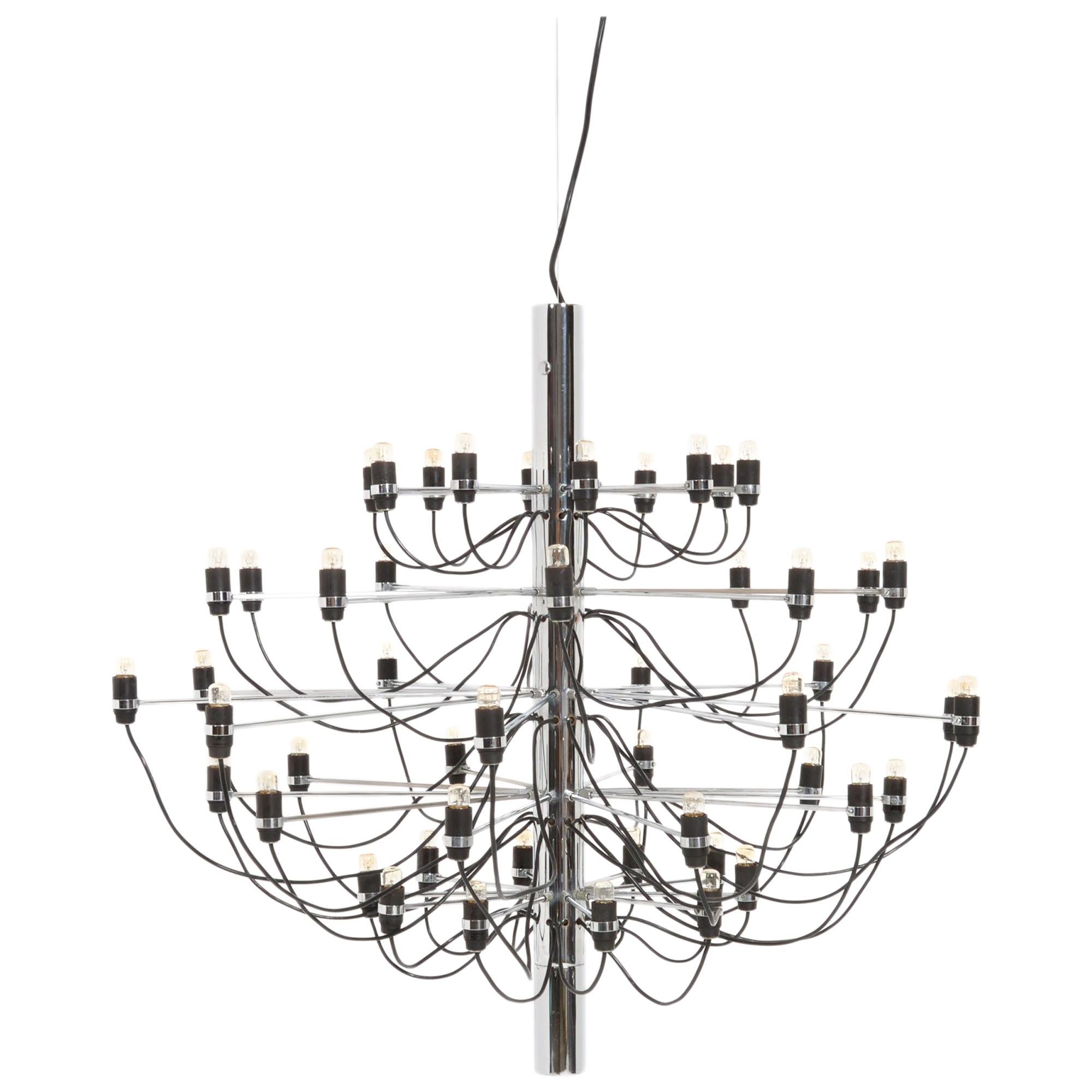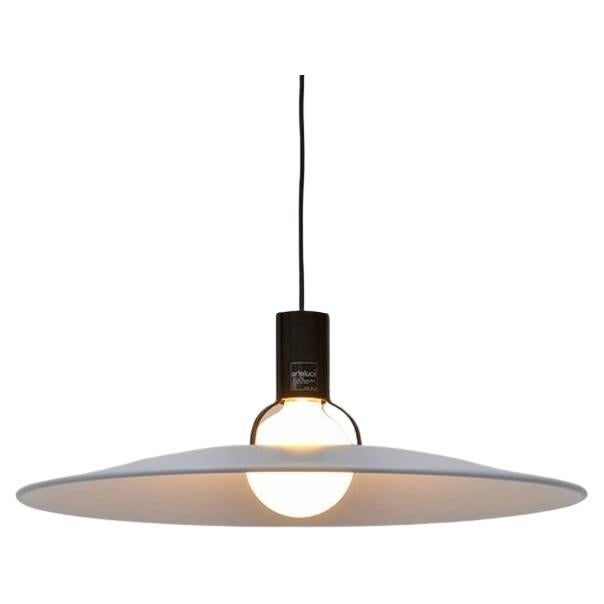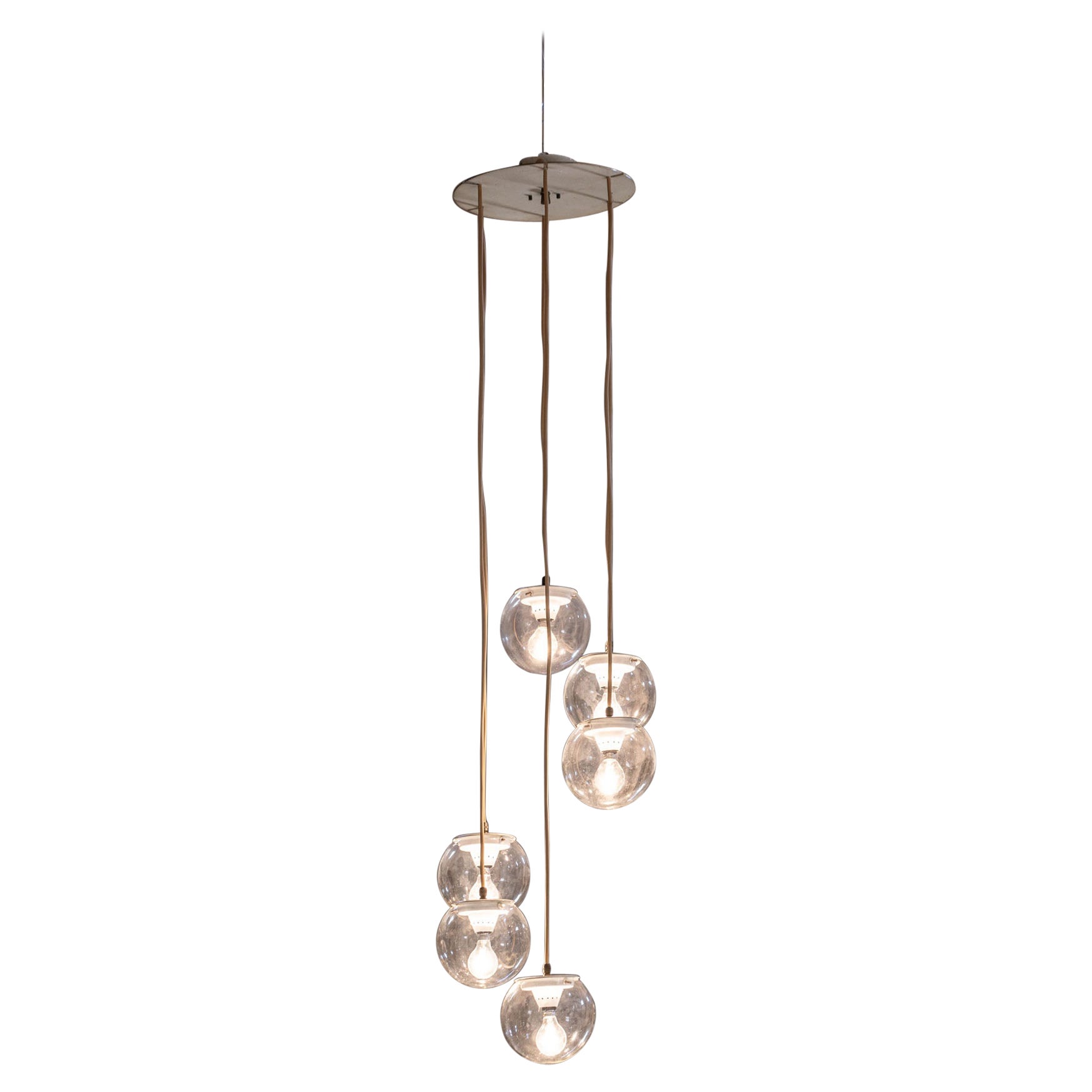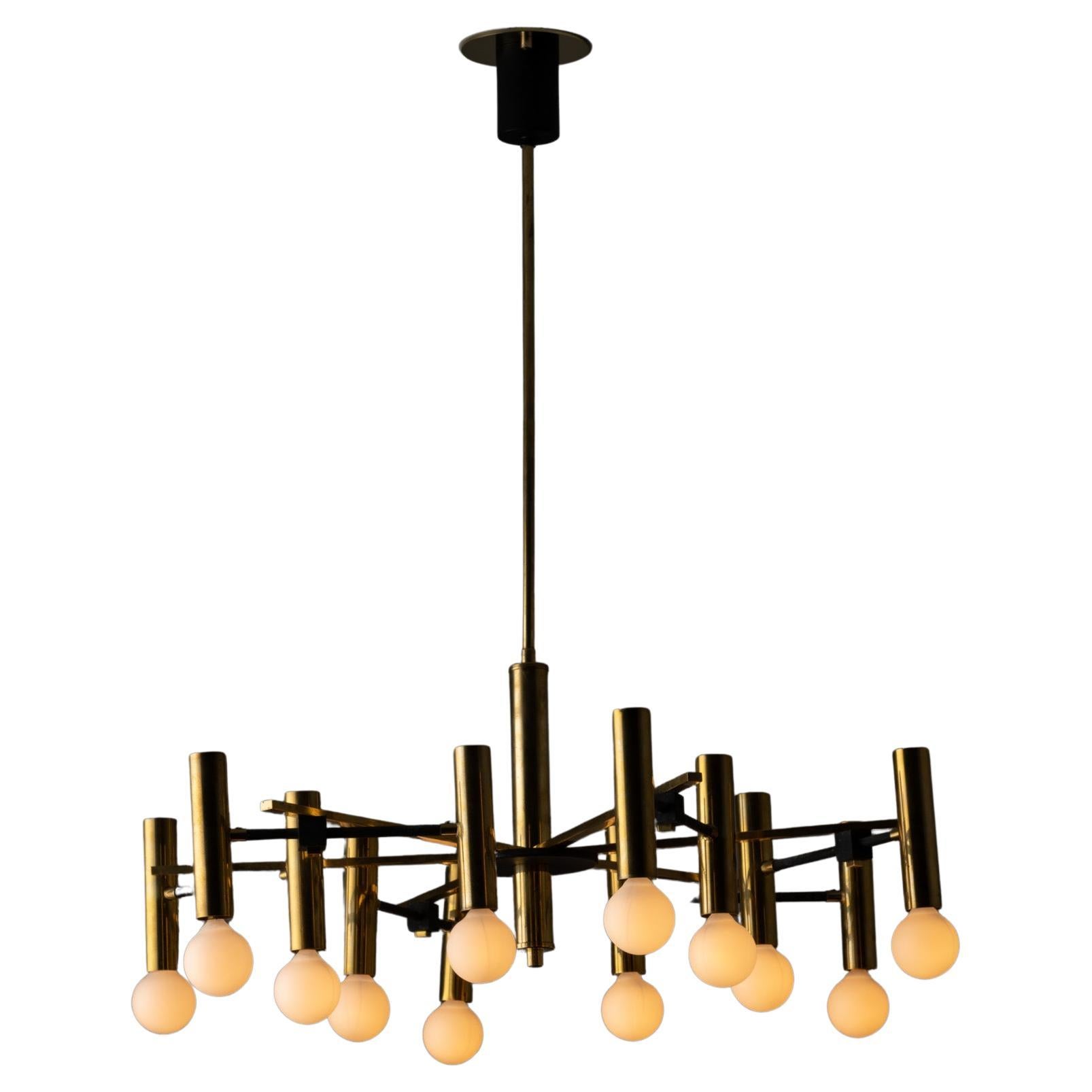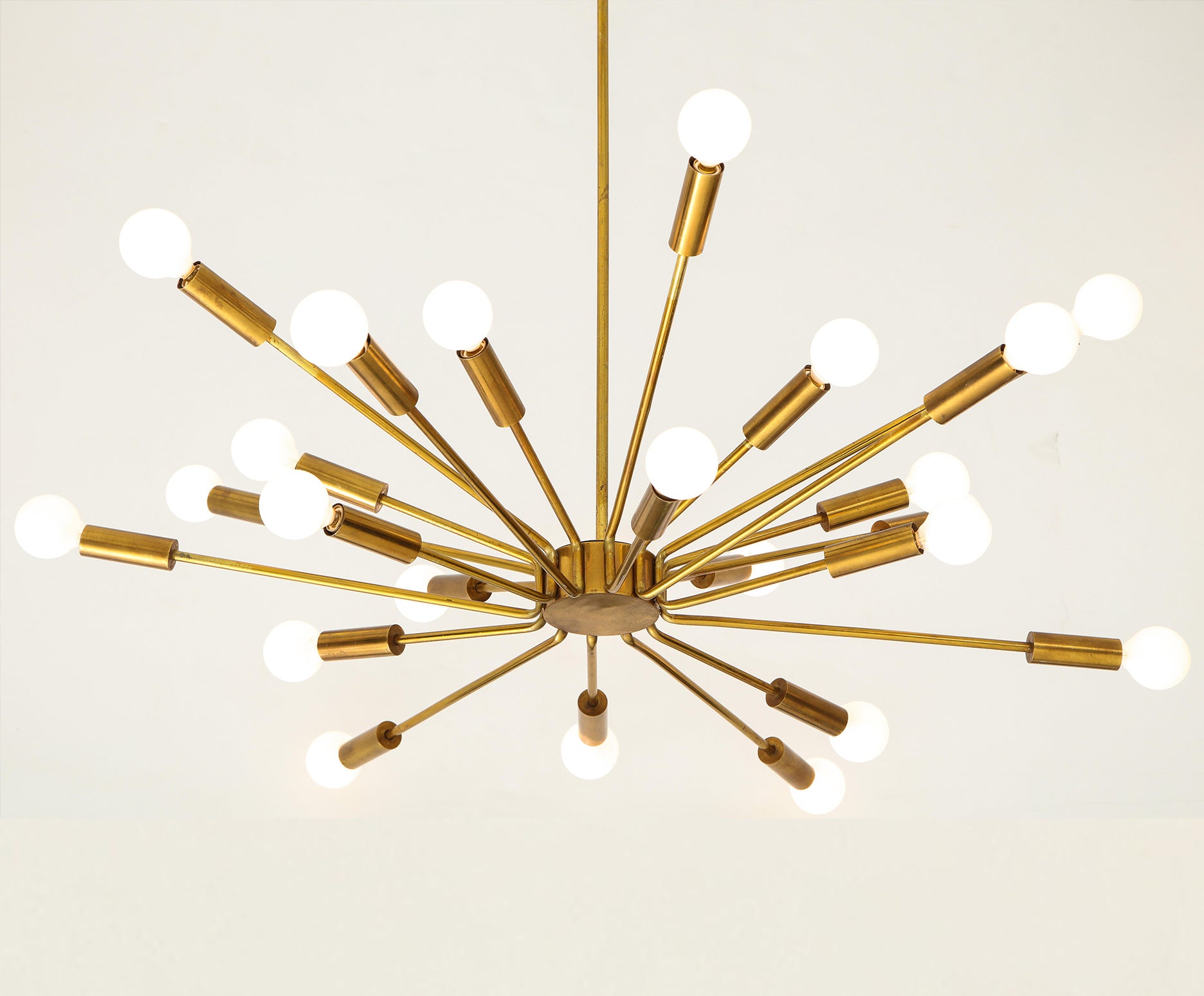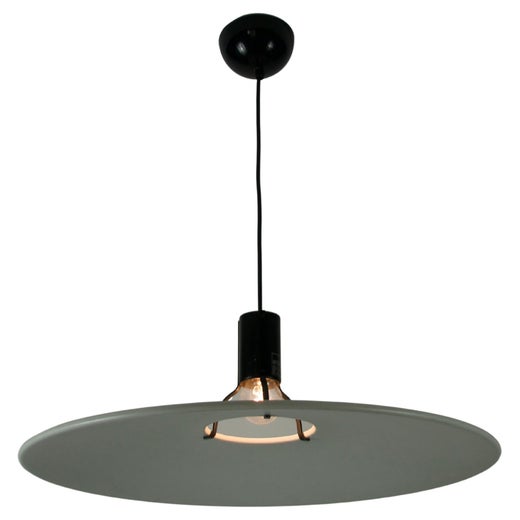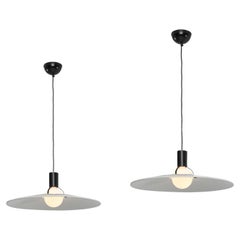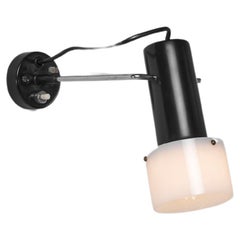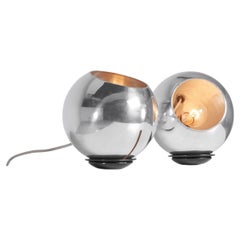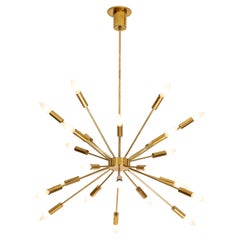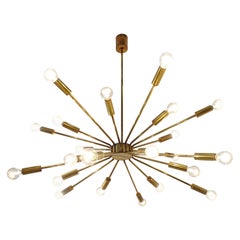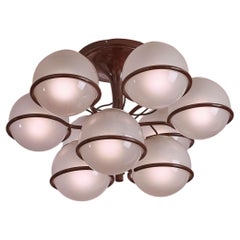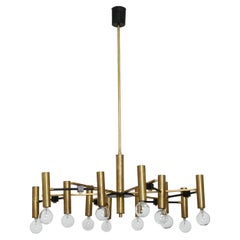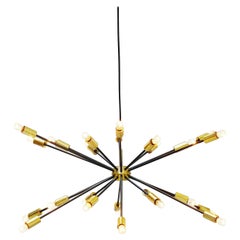
Gino Sarfatti 2003 irr chandelier Arteluce Italy 1939
View Similar Items
Gino Sarfatti 2003 irr chandelier Arteluce Italy 1939
About the Item
- Creator:Gino Sarfatti (Designer),Arteluce (Manufacturer)
- Design:
- Dimensions:Height: 15.75 in (40 cm)Width: 33.47 in (85 cm)Depth: 33.47 in (85 cm)
- Style:Mid-Century Modern (In the Style Of)
- Materials and Techniques:
- Place of Origin:
- Period:
- Date of Manufacture:1939
- Condition:Rewired. Wear consistent with age and use.
- Seller Location:Roosendaal, NL
- Reference Number:1stDibs: LU933024920502
Sputnik Chandelier
It is fitting that Gino Sarfatti (1912–85) had his sights set on the skies for his ornate and influential Sputnik chandelier. The Venice-born designer and industrialist had been pursuing an aeronautics degree at the University of Genoa when his father encountered financial troubles and relocated the family to Milan, where Sarfatti inadvertently created his first lighting fixture.
After he built a lamp for a friend using a glass vase and a coffee machine’s electrical components, Sarfatti soon became enamored with lighting design. In 1939, opened his Arteluce workshop, followed by a retail space.
Working closely with local artisans, he gained valuable technical knowledge and developed hundreds of provocative, pioneering lighting projects that, given economic conditions in pre– and post–World War II Italy, were originally dependent on a cobbling of limited resources. The Sputnik chandelier — artful but constructed from few materials — owes its design to the skills that Sarfatti had honed on the job.
Nickname aside, the ceiling fixture that Sarfatti called Fuoco d'artificio (Italian for “fireworks”) was designed in 1939, nearly 20 years before the Soviet Union launched its Sputnik 1 satellite into orbit. The chandelier wasn’t actually manufactured until the early 1950s — ahead of the satellite's liftoff, mysteriously — but the design was a snug fit for the era's futurist architecture and Pierre Cardin’s flashy vinyl apparel. In the furniture world, the debut of Eero Aarnio’s pod-like Ball chair was imminent, and the Space-Age frenzy had engulfed popular culture, technology and politics.
In its awe-inspiring arrangement of jutting tubular brass arms and exposed pear-shaped bulbs (some models feature more than 20), Sarfatti’s light was an appropriate addition to the quirky Space-Age furnishings that had become fashionable in the 1950s. While the designer pursued function and utilitarianism, he was prone to the kind of experimentation that yielded his famous chandelier.
The Sputnik uses suspension cables and metal reflectors in lieu of the parchment lampshades that were commonplace during the early days of Arteluce. In 1973, following collaborations with Franco Albini, Marco Zanuso and others over the years, Sarfatti sold his award-winning company to lighting manufacturer FLOS, while his son, Riccardo, cofounded Luceplan in 1979.
Gino Sarfatti
That a spiky, futuristic chandelier named “Sputnik,” which was highly suggestive of the Soviet satellite of the same name, designed by an Italian engineer could predate the space age and the satellite’s launch by a few decades is the stuff of legend. But in 1939, Venetian-born Gino Sarfatti channeled his obsession with light and expert engineering skills into a design so bold it predicted the future. He would go on to design around 700 lighting products in his lifetime — each table lamp, wall light, pendant and chandelier superb and unorthodox in shape.
Sarfatti’s singular focus on creating opulent lighting designs that were rational in their use of resources makes him one of the most innovative lighting designers in history. He was studying to be an aeronautical engineer at the University of Genoa when his family’s financial troubles led him to drop out and move to Milan to help. During this time, he built a lamp for a friend using a coffee machine’s electric components and a glass vase. This exercise sparked his fascination with lighting, and he went on to found Arteluce in 1939. What followed was a period of working with skilled artisans and tinkering with materials instead of sketching. The self-taught designer soon established himself as a creator of provocative, sculptural luxury lighting. Through the company, he collaborated with some of the 20th century’s most influential designers, such as Vittoriano Viganò, who worked on Arteluce lighting between 1946 and 1960. In the 1950s and ’70s, Franco Albini, Franca Helg, Ico Parisi and Massimo Vignelli all contributed designs.
Sarfatti used resources mindfully and injected functionality into everything he designed. His light fixtures were lightweight, easy to take apart and reassemble and could be affordably repaired. This marriage of utilitarianism and glamour lent Sarfatti’s designs a clean, minimal yet arresting splendor, based on their graphical forms and construction.
After World War II, Sarfatti embraced new wiring technologies and materials like plexiglass, such as his 1972 project with Carlo Mollino that filled the Teatro Regio in Turin with hundreds of plexiglass pipes. In 1973, Sarfatti sold Arteluce to FLOS. His foresight, invention and fearlessness as a designer are revered to this day.
Find a collection of vintage Gino Sarfatti lighting now on 1stDibs.
More From This Seller
View AllVintage 1970s Italian Mid-Century Modern Chandeliers and Pendants
Metal, Aluminum
Vintage 1950s Italian Mid-Century Modern Chandeliers and Pendants
Aluminum
Vintage 1950s Italian Mid-Century Modern Wall Lights and Sconces
Metal, Aluminum, Chrome
Vintage 1960s Italian Mid-Century Modern Table Lamps
Metal, Aluminum
Vintage 1960s Italian Mid-Century Modern Table Lamps
Aluminum
Vintage 1950s Italian Mid-Century Modern Table Lamps
Metal, Aluminum
You May Also Like
Vintage 1950s Italian Mid-Century Modern Chandeliers and Pendants
Brass
Vintage 1930s Italian Mid-Century Modern Chandeliers and Pendants
Brass
Vintage 1960s Italian Mid-Century Modern Chandeliers and Pendants
Aluminum
Vintage 1960s Italian Mid-Century Modern Chandeliers and Pendants
Metal, Brass
Vintage 1950s Chandeliers and Pendants
Aluminum
Vintage 1930s Italian Mid-Century Modern Chandeliers and Pendants
Aluminum
